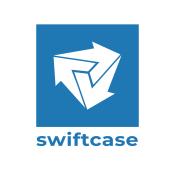Onboarding new employees can be a mammoth task that involves lots of people and resources. Time and money must be spent on all sorts of things, like forms, training, equipment, meetings and monitoring.
But it doesn’t have to be this way. If you choose to automate your onboarding process, your bottom line will benefit in numerous ways (some of which you may not have considered!). Read on to find out more.
Speeds up the process
There is a laundry list of tasks to complete when someone joins a business. In fact, the average onboarding experience consists of 54 activities. This includes everything from setting up email, syncing calendars and connecting software accounts to completing questionnaires, attending training sessions and organising workspaces.
Automation accelerates many of these tasks and enables them to happen without human error. It also ensures the workflow is always current despite technology changes, rather than organisations putting every new hire through a dated process that no longer makes sense.
Boosts morale and productivity
Employees who experience a high-quality onboarding process feel more confident in their roles and are much more productive. When people are supported towards success, they work harder and feel happier, leading to greater loyalty and stronger results.
A good onboarding process goes beyond the first week of the job and helps new team members learn the ropes so they can start actively contributing faster. Automation makes the experience feel considered, efficient and empowering. It gets people excited to start!
The alternative? An ineffective, haphazard process that leads to confusion, frustration and complacency.
Reduces costs
In the latter situation described above, the organisation loses money due to unproductive staff and missed commercial opportunities. Turnover rates and recruitment costs are also high. It’s a no-win situation.
Automating your onboarding process addresses all of those problems as well as reducing the number of workers required to input new employee data and minimising other admin costs, such as printing paper.
Greater visibility and tracking
When all employee information and onboarding tasks are stored in one centralised place, the HR team can monitor the entire process. This transparency ensures everyone is better informed and anyone with access can easily track a new hire’s progress.
One system can host everything a newbie needs, meaning nothing important gets missed or lost. This can include training videos, policy documents and reports as well as details of individual goals and objectives for the role.
Automation software also allows you to collect feedback from those team members, which has been found to improve relationships by 91%.
Prioritises people
Importantly, automation never replaces the human welcome, but it greatly enhances the efforts of the HR team.
Less time is wasted handling mounds of documentation because everything is streamlined and simplified by the software. This leaves more space for meaningful conversations that nurture long-term relationships and advocacy.
Next steps
When you combine the potential for resources saved and opportunities gained, you’ll see that automating your onboarding process is an absolute no-brainer.
As a business, you’re able to reduce costs and errors while boosting efficiency and team productivity. At the same time, your recruit avoids that classic new job overwhelm, enabling them to progress with focus and fulfilment.
Still, if you want the best results, you’ll need to invest in the right solution that is customisable, user-friendly and can seamlessly fit into your important HR processes.
If you’d like to partner with a company that ticks all those boxes, then we’d love to help. Start your FREE SwiftCase trial and discover how it feels to run a streamlined, stress-free business today.
